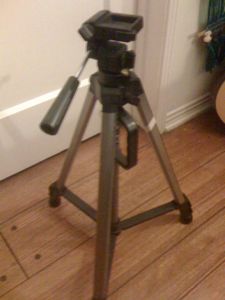I recently received a note from a fellow YouTuber asking for advice about how to make a good travel video. Little did he know that I had spent years working in post-production editing and I have plenty to say about the subject. While I initially intended for a thick volume of detailed topics about editing and editing philosophy, I have trimmed down a thousand thoughts to the basic five suggestions that will make any travel production better.

1. Use a tripod when possible.
Tripods will eliminate most camera shake and going hand-held or relying upon flat level surfaces in a jungle is not as reliable as one might think. Remember, the quality of the tripod will dictate how much shake is reduced. Passing vehicles, raving parties with a rumbling bass and swirling wind can sway a tripod and change the stability of a video camera.
Still, most inexpensive tripods are enough to get most jobs done. I measured the diagonal space of my carry-on luggage to find the maximum length tripod (when collapsed) that I could easily carry.
2. Read "In The Blink of an Eye" by Walter Murch
Murch is one of the most famous sound and picture editors (Apocalypse Now, The Godfather and many more) in the world, and when I spent my days in a tiny, darkened edit bay, "In the Blink of an Eye" was required reading. I imagine it still is. His advice is entertaining and smart. However, this one is not a how-to edit book. "In the Blink of an Eye" is more of an approach and philosophy on editing.
3. Think like a photographer
Pretty and interesting images help keep an audience focused on the story. If I wanted to make a video about Lima, Peru, as an example, I would want video showing Lima from a wide variety of perspectives such as: close-ups, wide landscapes, unique people, and architecture. I would also want a wide variety of images. Some video clips might be standard in their approach: shooting from eye-level with my subject featured within the video frame. I would also want images that are out of the ordinary like low-angle (shooting up to the subject), high-angle (shooting down at the subject), dutch (shooting with the camera slightly rotated) and juxtaposing interesting pairs like old and new. I may not use all of my footage in the final product, but it is nice to know the footage is available if needed.
4. Think like an editor
Before I start shooting, I like to know where I am headed. I ask myself, "What is the goal of the final product? Will there be narration? Music? Who is my audience?" The job of an editor is taking voice, music, video, titles, transitions and special effects and putting them all together in a cohesive, linear sequence.
5. Keep it simple
Good editing is an art form. Generally, I try to keep cuts to a minimum and let the story speak for itself, using cuts to steer the viewer in a particular direction. This means all my cuts have a specific purpose. If I do not know why I am making a cut then I let the shot roll.
While it may take years to become a great editor, these steps should get future travel video makers started on the right path.